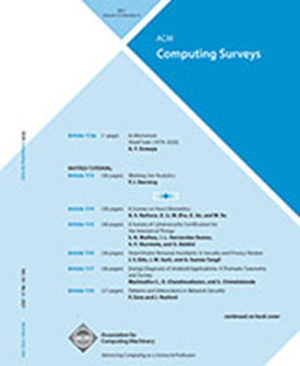Hallucination Detection in Foundation Models for Decision-Making: A Flexible Definition and Review of the State of the Art
IF 23.8
1区 计算机科学
Q1 COMPUTER SCIENCE, THEORY & METHODS
引用次数: 0
Abstract
Autonomous systems are soon to be ubiquitous, spanning manufacturing, agriculture, healthcare, entertainment, and other industries. Most of these systems are developed with modular sub-components for decision-making, planning, and control that may be hand-engineered or learning-based. While these approaches perform well under the situations they were specifically designed for, they can perform especially poorly in out-of-distribution scenarios that will undoubtedly arise at test-time. The rise of foundation models trained on multiple tasks with impressively large datasets has led researchers to believe that these models may provide “common sense” reasoning that existing planners are missing, bridging the gap between algorithm development and deployment. While researchers have shown promising results in deploying foundation models to decision-making tasks, these models are known to hallucinate and generate decisions that may sound reasonable, but are in fact poor. We argue there is a need to step back and simultaneously design systems that can quantify the certainty of a model’s decision, and detect when it may be hallucinating. In this work, we discuss the current use cases of foundation models for decision-making tasks, provide a general definition for hallucinations with examples, discuss existing approaches to hallucination detection and mitigation with a focus on decision problems, present guidelines, and explore areas for further research in this exciting field.求助全文
约1分钟内获得全文
求助全文
来源期刊

ACM Computing Surveys
工程技术-计算机:理论方法
CiteScore
33.20
自引率
0.60%
发文量
372
审稿时长
12 months
期刊介绍:
ACM Computing Surveys is an academic journal that focuses on publishing surveys and tutorials on various areas of computing research and practice. The journal aims to provide comprehensive and easily understandable articles that guide readers through the literature and help them understand topics outside their specialties. In terms of impact, CSUR has a high reputation with a 2022 Impact Factor of 16.6. It is ranked 3rd out of 111 journals in the field of Computer Science Theory & Methods.
ACM Computing Surveys is indexed and abstracted in various services, including AI2 Semantic Scholar, Baidu, Clarivate/ISI: JCR, CNKI, DeepDyve, DTU, EBSCO: EDS/HOST, and IET Inspec, among others.
 求助内容:
求助内容: 应助结果提醒方式:
应助结果提醒方式:


